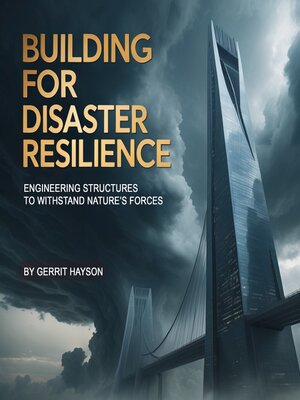Building for Disaster Resilience
audiobook (Unabridged) ∣ Engineering Structures to Withstand Nature's Forces
By Gerrit Hayson

Sign up to save your library
With an OverDrive account, you can save your favorite libraries for at-a-glance information about availability. Find out more about OverDrive accounts.
Find this title in Libby, the library reading app by OverDrive.



Search for a digital library with this title
Title found at these libraries:
| Library Name | Distance |
|---|---|
| Loading... |
This audiobook is narrated by a digital voice.
The morning of March 11, 2011, began like any other in Sendai, Japan. Office workers filled their morning trains, children walked to school, and engineers at the Fukushima Daiichi Nuclear Power Plant monitored their instruments with practiced routine. By afternoon, everything had changed. The Great East Japan Earthquake, registering a magnitude of 9.1, had triggered a tsunami that would forever alter how we think about disaster-resilient design.
The tsunami waves, reaching heights of over 40 meters in some areas, overwhelmed seawalls that had been considered adequate for centuries. Nuclear reactors designed to withstand the most severe earthquakes imaginable found themselves facing forces that exceeded every calculation. In the aftermath, as the world watched smoke rise from damaged reactor buildings, a sobering truth emerged: even our most sophisticated engineering had failed to anticipate nature's full fury.
This catastrophe serves as a stark reminder that disaster resilience is not merely an engineering challenge but a fundamental responsibility that touches every aspect of human civilization. From the homes where families sleep safely to the bridges that connect communities, from the hospitals that save lives to the power plants that energize our modern world, the structures we build must be designed not just for ordinary conditions but for extraordinary ones.







